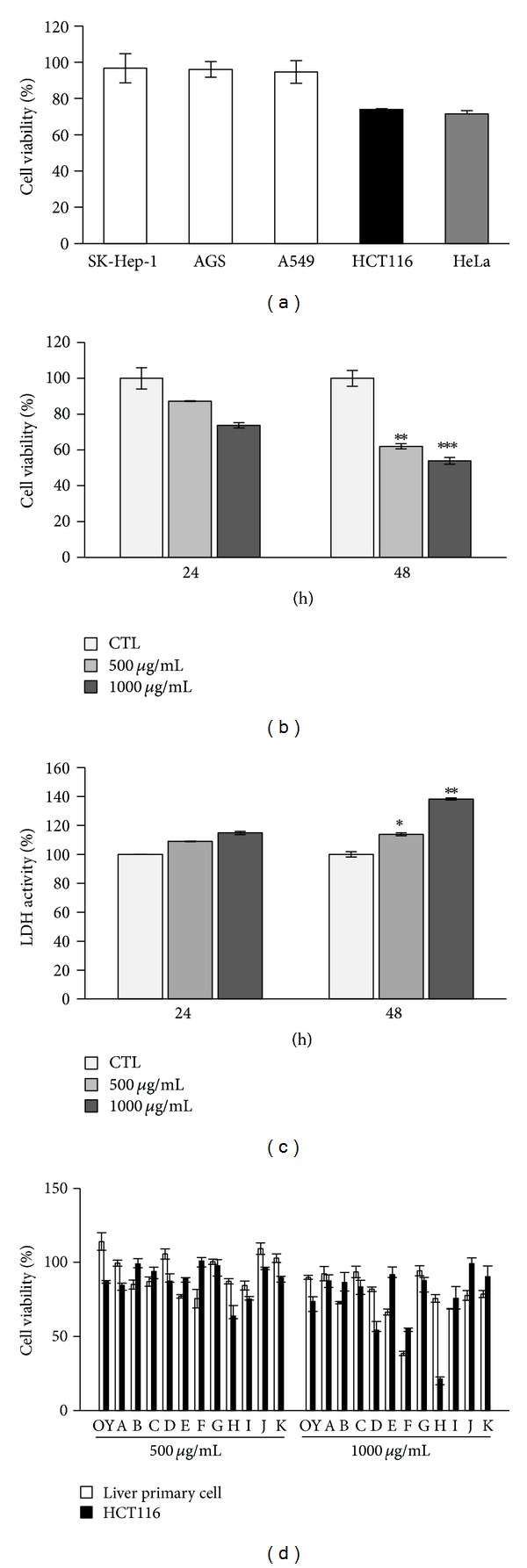Figure 2.

Inhibitory effect of OY on the cell proliferation in human cancer cells. (a) Inhibition of cell viability by OY in several human cancer cells. Liver (SK-Hep-1), stomach (AGS), lung (A549), colon (HCT116), and cervical (HeLa) cancer cells were treated with OY (500 μg/mL) and incubated for 48 h. Cell viabilities were determined by MTT assay. (b) Dose- and time-dependent effect of OY on the viability of HCT116 cells. Cells were treated with 500 and 1000 μg/mL for indicated time, and viabilities were determined using MTT assay. Each data value indicates the mean ± SD. **P < 0.01 and ***P < 0.001 versus untreated cells. (c) Dose- and time-dependent LDH release by OY in HCT116 cells. Cells were treated with 500 and 1000 μg/mL for indicated time, and the release of LDH was determined using LDH detection kit. Each data value indicates the mean ± SD. *P < 0.05, **P < 0.01, and ***P < 0.001 versus untreated control cells (CTL). (d) Comparison of cytotoxicity between OY and its constituent herbs on cancer cells and mouse liver primary cells as a normal cells, respectively. Cells were treated with OY or each constituent herbs contained in OY at concentrations of 500 μg/mL and 1000 μg/mL for 24 h, respectively. Cell viabilities were determined using MTT assay. The results were expressed as a percentage of viable cells compared to untreated control cells. A, Cnidii Rhizoma; B, Angelica Dahurica Root; C, Glycyrrhizae Radix et Rhizoma; D, Citrus Unshiu Peel; E, Batryticatus Bombyx; F, Platycodon Root; G, Aurantii Fructus Immaturus; H, Ephedra Herb; I, Zingiberis Rhizoma; J, Lindera Root; K, Zizyphi Fructus.
